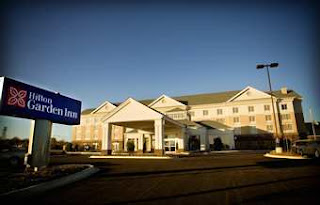Elvis Here We Come!
Today we are travelling to Tupelo, MS. Located in the hills of Northeast Mississippi, Tupelo, is known as the birthplace of Elvis Presley, but is also the headquarters to the scenic Natchez Trace Parkway, and the Tupelo Automobile Museum which has over 100 antique and classic cars.
Birthplace of Elvis
The King of Rock and Roll was born in a modest, two-room house on January 8, 1935. From this humble beginning, Elvis Presley began his swift rise to become the world's most popular entertainer.
The house, built by his father with $180, draws over 50,000 visitors each year from across the world.
Tupelo bought the house and land with money provided from a 1956 Tupelo concert by Elvis himself, who wanted a park for neighborhood children. As an official Mississippi landmark, the birthplace is part of the 15-acre Elvis Presley Park. There is a museum which tells about the early days of Elvis in rural Mississippi and how his roots influenced his future. There is also a Chapel which was built by donations from his fans.
Nachez Trace
The Natchez Trace Parkway covers 444 miles through three states and 10,000 years of North American history. Established in 1938 as part of the National Park System, the Parkway was completed in 2005.
The natural travel corridor that became the Natchez Trace is very old. It bisected the traditional homelands of the Natchez, Chickasaw, and Choctaw nations. As the U.S. expanded westward in the late 1700s and early 1800s, growing numbers of travelers tramped the rough trail into a clearly marked path. In 1801 President Thomas Jefferson designated the Trace a national postal road for the delivery of mail between Nashville and Natchez.
Gen. Andrew Jackson, Jefferson Davis, James Audubon, Meriwether Lewis (who died on the Trace in 1809), and Ulysses S. Grant are among the famous Americans to have traveled the Natchez Trace.
In the early 1800s through the mid-1820s, “Kaintucks” from the Ohio River Valley floated cash crops, livestock, and other materials down the Mississippi River on wooden flatboats. At Natchez or New Orleans, they sold their goods, sold their boats for lumber, and walked or rode horseback toward home via the Old Trace. As the road was improved, stands (inns) provided lodging, food, and drink to Trace travelers.
Marnie R takes a break at one of the numerous overlooks on the Natchez Trace Parkway.
A group of riders pedals in the distance after taking a break along the Natchez Trace Parkway.
The scenery along the trace is beautiful.
Since it is a limited access road, no commercial trucks allowed and speed restricted it is a beautiful road to ride on.
Parts of the original trace still survives.
Informational sign about the Old Trace.
We are staying at the Hilton Garden Inn.
Tomorrow is a rest day and then we are off to Columbus, MS.














No comments:
Post a Comment